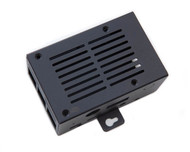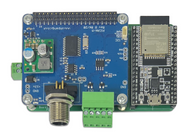- Home
- Raspberry Pi
- PICAN-M - NMEA 0183 & NMEA 2000 HAT For Raspberry Pi
Product Description
Free Shipping Within the United States!
The PICAN-M (M = Marine) is a Raspberry Pi HAT with NMEA 0183 and NMEA 2000 connection. The NMEA 0183 (RS422) port is accessible via a 5-way screw terminal. The NMEA 2000 port is accessible via a Micro-C connector.
Please be aware that this board cannot be powered per the NMEA 2000 connection, since it comes without an onboard power supply. The version with power supply (SMPS) is available at:
https://copperhilltech.com/pican-m-nmea-0183-nmea-2000-hat-for-raspberry-pi-with-smps/
Features
- CAN Bus connection via Micro-C connector
- 120 Ω terminator ready
- SocketCAN driver
- appears as can0 to application
- NMEA 0183 (RS422) via 5-way screw terminal
- appears as ttyS0 to application
- LED indicator (GPIO22)
- Qwiic (I2C) connector for extra sensors
- Compatible with OpenCPN, OpenPlotter, Signal K and CANBoat
- Raspberry Pi not included
Metal Enclosure for PICAN-M and Raspberry Pi 4
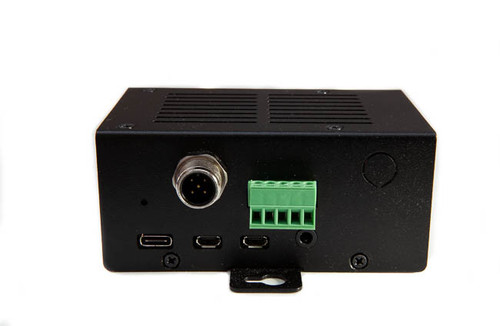 This metal enclosure was designed for use with the PiCAN-M NMEA 0183 & NMEA 2000 HAT and the Raspberry Pi 4.
This metal enclosure was designed for use with the PiCAN-M NMEA 0183 & NMEA 2000 HAT and the Raspberry Pi 4.- Designed for PiCAN-M and Raspberry Pi 4 (Not included in scope of delivery)
- Made from metal
- Cutouts for SD card, HDMI, LED and USB C.
- Mounting flange allows wall mounting
- Supplied with screws and rubber feet
Raspberry Pi 4 32 GB SD Card With OpenPlotter, Signal K Installed
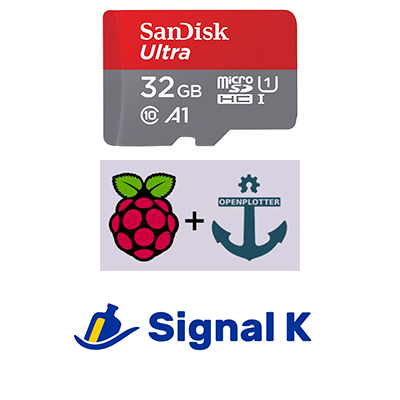 The SanDisk Ultra 32 GB microSDHC Class 10 micro-SD card comes with the Raspberry Pi OS pre-installed plus OpenPotter / Signal K installed for use with the Raspberry Pi 4 and the PiCAN-M NMEA 0183 & NMEA 2000 HAT.
The SanDisk Ultra 32 GB microSDHC Class 10 micro-SD card comes with the Raspberry Pi OS pre-installed plus OpenPotter / Signal K installed for use with the Raspberry Pi 4 and the PiCAN-M NMEA 0183 & NMEA 2000 HAT.
Features
- OpenCPN
- Signal K
- I2C Sensors
- NMEA 2000
- NMEA 0183
Documents
- Schematics...
- User Guide Including OpenPlotter v3 Installation (PDF)...
- User Guide Including OpenPlotter v2 Installation (PDF)...
Additional Resources
- Testing NMEA 0183 on the PICAN-M...
- NMEA 2000 Parameter Group Descriptions (Messages) with Field Description (PDF)...
- What is NMEA 2000? (PDF)...
- NMEA 2000 Explained (PDF)...
- The Basics of NMEA 2000 (Boating Magazine)...
- SeaBits Marine Electronics, Boating and Technology: NMEA 2000 powered Raspberry Pi...
Signal K Setup
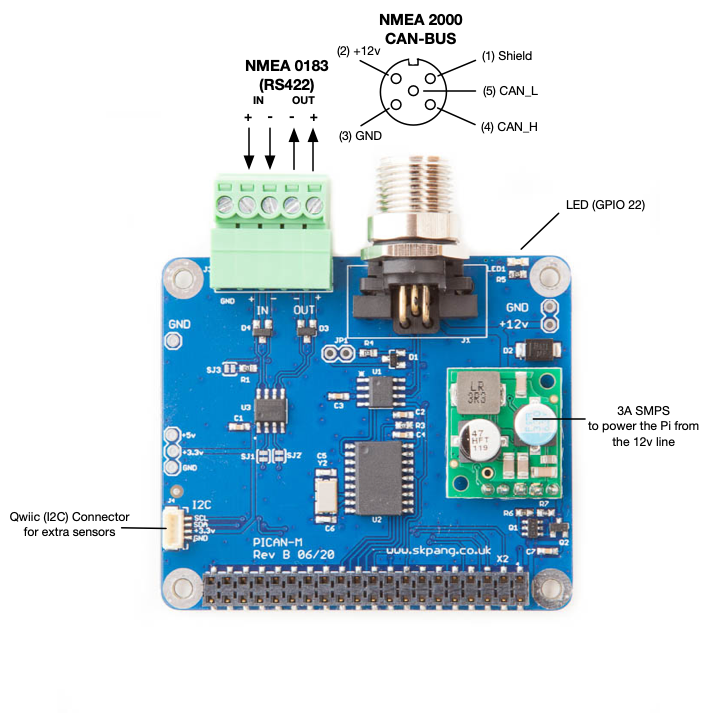
Note: The above image will be updated soon.
GPS with NMEA-183 RS422 connection and BME280 Atmospheric Sensor with Qwiic connection. (Other hardware shown not included).
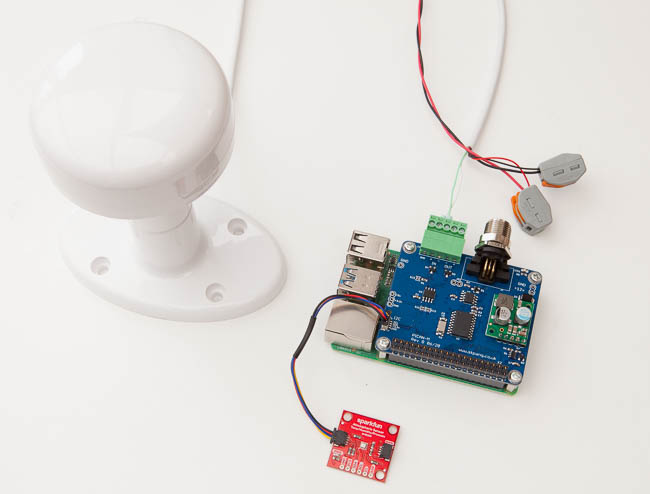
NMEA 0183 GPS device in use with OpenCPN:
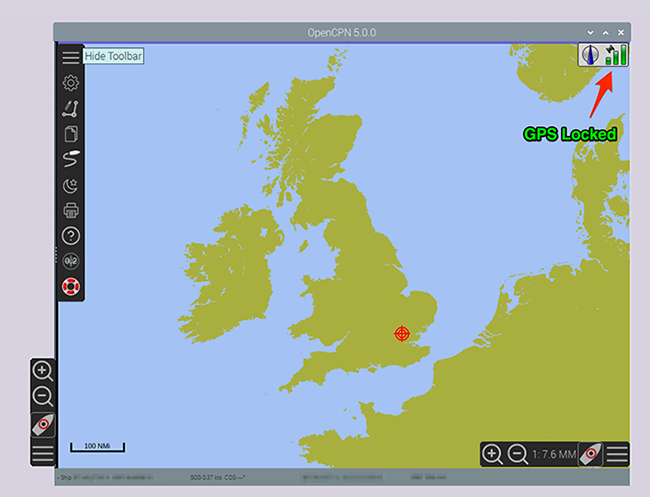
PiCAN-M board connected to a NMEA-2000 network. (Other hardware shown not included).
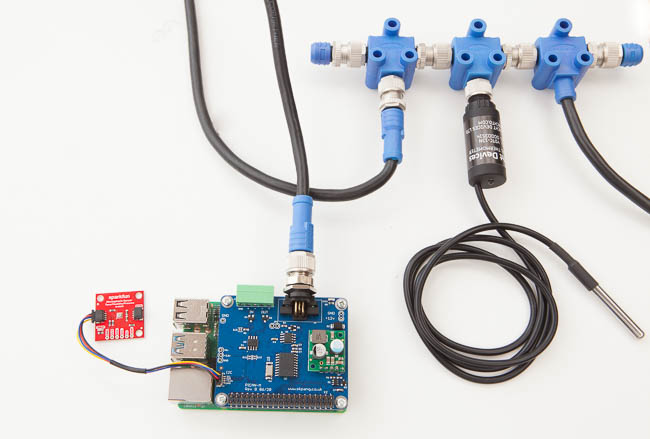
Temperature reading from a Yacht Devices Digital Thermometer NMEA 2000 YDTC- 13N on Signal K instrument panel.
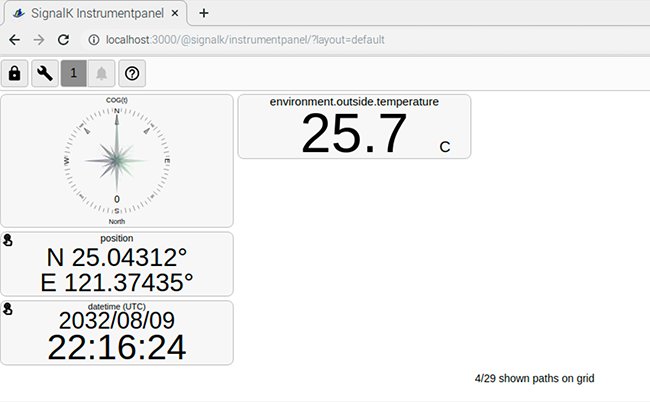
OpenCPN
OpenCPN (Open Chart Plotter Navigator) is a free software project to create a concise chart plotter and navigation software for use underway or as a planning tool. OpenCPN is developed by a team of active sailors using real-world conditions for program testing and refinement. OpenCPN uses GPS input data to determine the ship's position and data from an AIS receiver to plot the positions of ships in the neighborhood. More Information...
OpenPlotter
OpenPlotter is a combination of software and hardware to be used as a navigational aid on small and medium boats. It is also a complete home automation system onboard. It works on ARM computers like the Raspberry Pi or any computer running a Linux Debian derivative. It is low-cost, low-consumption, and modular. You will need the basic parts and some optional parts. It will depend on what kind of data you want to collect, process, display, and what type of equipment your boat already has. More Information...
Signal K
Signal K is a modern and open data format for marine use. Built on standard web technologies, including JSON, WebSockets, and HTTP, Signal K provides a method for sharing information in a way that is friendly to WiFi, cellphones, tablets, and the Internet. A format available to everyone, where anyone can contribute, Signal K is the first truly open data format for the marine industry. It is set to revolutionize how we consume and interact with data on boats. Signal K is open source, but friendly to companies that want to use it in closed source applications or hardware. More Information...
CANBoat
CANBoat represents a suite of command-line driven programs that work with a boat's NMEA 2000 (CAN Bus) networks. The NMEA 2000 database and implementation are copyrighted by the NMEA (National Marine Electronics Association). Access is restricted to members and parties that pay for it. If they do so, they cannot divulge the content of the database, thus making it impossible for open-source developers to get access to it. For this reason, engineers have reverse-engineered the NMEA 2000 database through network observation and assembling data from public sources. Since they are reverse-engineering, they can also include company-specific PGNs from companies such as Navico, Airmar, Garmin, Raymarine, and Furuno. More Information...
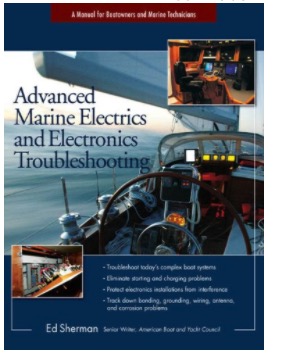 Advanced Marine Electrics and Electronics Troubleshooting
Advanced Marine Electrics and Electronics Troubleshooting
Whether you are a marine electronics professional or a boat owner, Advanced Marine Electrics and Electronics Troubleshooting helps you understand the new, more powerful methods of troubleshooting marine electrical and electronic systems.
A modern boat’s sophisticated installations and networked electronics can stretch the traditional diagnostic methods based on trouble lights and multimeters past their useful limits.
This book will show you how to:
- Use microprocessor-based diagnostic tools and techniques from the automotive and communications sectors, adapted for boats for the first time
- Diagnose the most difficult AC and DC problems
- Protect communications and navigation electronics from interference and lightning
- Seek out and eliminate stray-current sources and galvanic corrosion
 Loading... Please wait...
Loading... Please wait...







